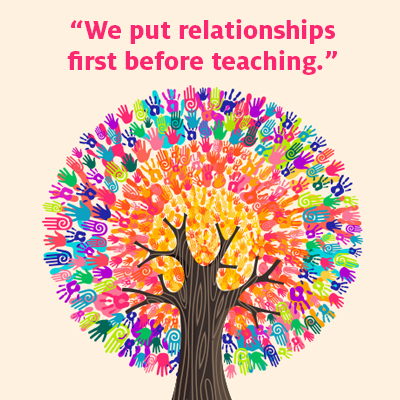Monica* was referred to therapy because she had been missing school for the previous two years. She felt overwhelmed by anxiety and unwanted negative thoughts and feelings that made it very difficult for her to go to school. Although the initial efforts to re-engage Monica in school were unsuccessful, our therapist did not give up and consistently reached out.
Over time, Monica built trust, opened up, and made progress:
First, she experienced being treated with dignity, compassion and respect, which helped her to see herself with new eyes and recover confidence in herself.
She understood the impact of trauma and grief in her life, and finally made sense of her feelings, thoughts and behavior.
The school worked with her to make sure that she felt safe coming to school, so her anxiety about school diminished over time.
She learned to communicate better with her teachers and her parents.
She got better at controlling her impulses and making better choices. She proudly shared how she had managed to stay away from someone trying to fight her. “Now I know better,” she said with a huge smile on her face.
Eventually, she understood the value of education. She wanted to be a good role model for her younger siblings. She graduated high school and was considering attending community college and working in the medical field.
At the last therapy session, Monica said, “Thanks so much for not giving up on me.”
The students we see in our Collaborative Counseling Program have experienced repeated emotional trauma after facing adverse life events, poverty, and oppression. While we live in a fast-paced society that wants to create quick fixes for human suffering, we do the opposite here at Acknowledge Alliance. We take time to make a connection with these youth, and help them unpack what has happened to them. They heal from the inside out so that they can re-engage in positive, lasting change.
*Student's name has been changed to protect confidentiality.












